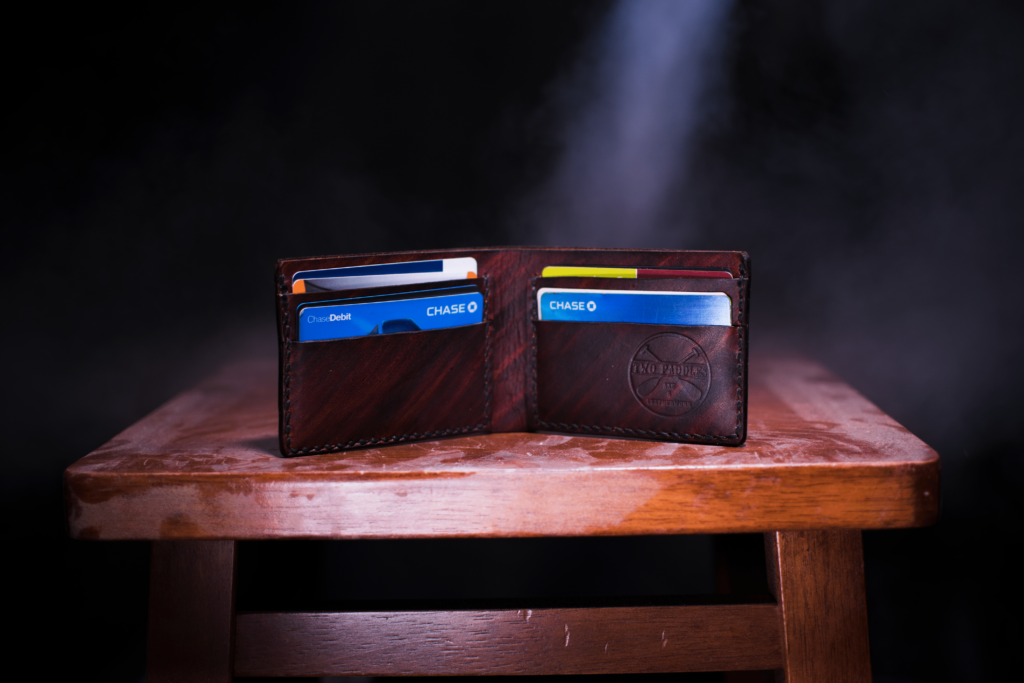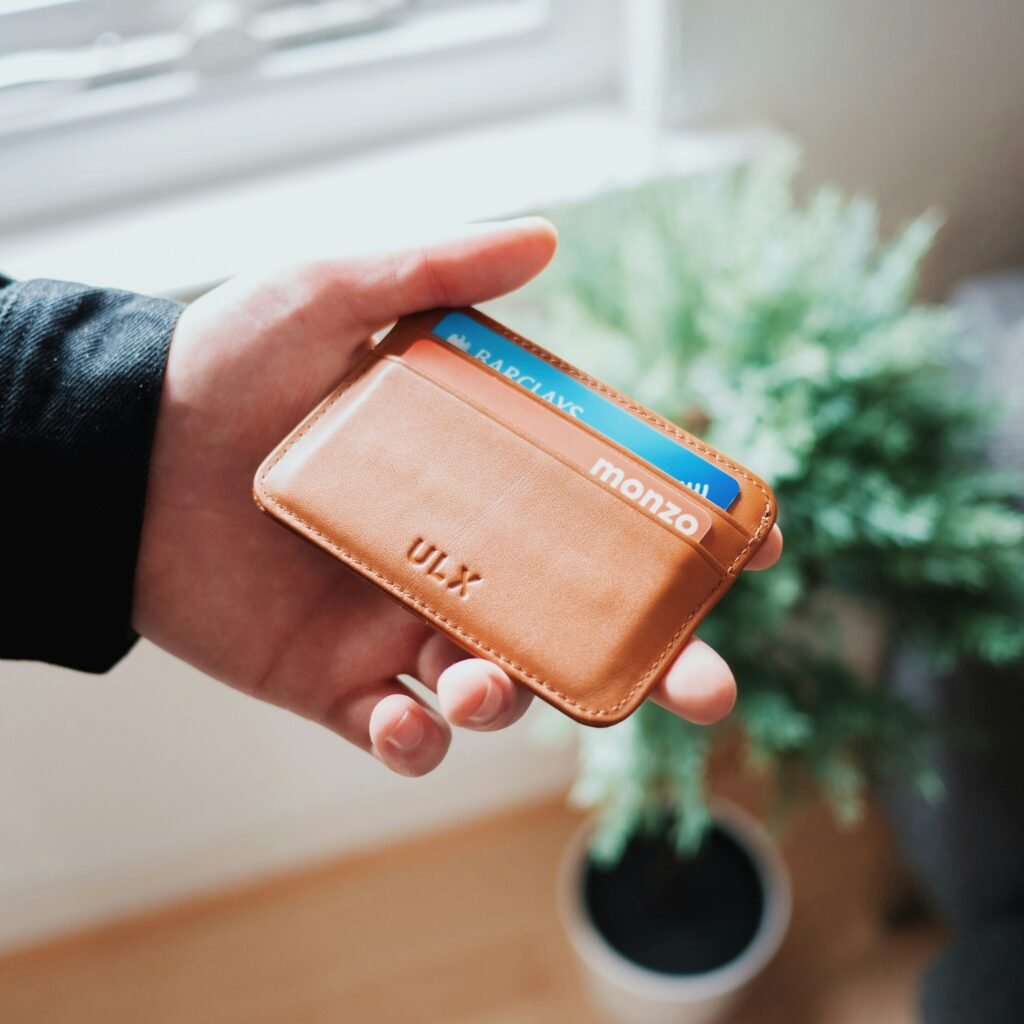Are you tired of struggling with a bulky wallet that weighs you down and takes up valuable space? Look no further than “The Ultimate Guide to Picking the Right Wallet Size.” This comprehensive guide will provide you with essential tips and tricks to help you choose the ideal wallet size that perfectly matches your needs and lifestyle. From minimalist fold wallets to spacious bifold designs, this article will guide you through the process of finding your perfect fit, ensuring that you can carry your essentials with ease and style. So, say goodbye to the hassle of an oversized wallet and say hello to the perfect pocket companion.

This image is property of images.unsplash.com.
Understand Your Needs
When it comes to choosing the right wallet, it’s important to understand your needs. Consider what you typically carry with you on a daily basis and what your essential items are. Are you someone who carries a lot of cash and cards, or do you prefer a minimalist approach? By evaluating your lifestyle and thinking about your style, you can narrow down the type of wallet that will best suit your needs.
Types of Wallets
There are several different types of wallets to choose from, each with its own unique features and benefits. The most common types of wallets include bifold wallets, trifold wallets, money clip wallets, cardholder wallets, and slim wallets. Understanding the differences between these types of wallets will help you make an informed decision.
-
Bifold Wallets: Bifold wallets are a classic choice, with a simple design that folds in half. They typically have multiple card slots, a bill compartment, and sometimes a coin pocket. Bifold wallets are a great option if you carry a moderate amount of cards and cash.
-
Trifold Wallets: Trifold wallets have a more compact design and provide additional storage space. They fold into three sections, offering more card slots, multiple bill compartments, and sometimes a coin pocket. Trifold wallets are a popular choice for those who like to carry a lot of cards and cash.
-
Money Clip Wallets: Money clip wallets are a minimalist option for those who prefer to carry only the essentials. They usually have a metal clip to hold cash and a few card slots. Money clip wallets are perfect for those who want a slim and sleek option.
-
Cardholder Wallets: As the name suggests, cardholder wallets are designed specifically for holding cards. They have multiple card slots and may also have a slot for cash. Cardholder wallets are ideal for those who primarily use cards for transactions.
-
Slim Wallets: Slim wallets are a modern and sleek choice, perfect for those who want a minimalist and compact option. They typically have a few card slots and a bill compartment, offering just enough space for your essential items.

This image is property of images.unsplash.com.
Consider the Size
Choosing the right size wallet is crucial for ensuring it fits comfortably in your pocket and can hold all your essentials. Here are a few factors to consider when determining the size of your wallet.
Measure Your Essential Items
Take inventory of the items you typically carry in your wallet, such as cards, cash, IDs, and any other essential items. This will give you an idea of how much space you’ll need in your wallet.
Consider Pocket Size
Think about the size of the pockets in your pants or jacket. You want to choose a wallet that will fit comfortably in your pocket without being too bulky or causing discomfort.
Think About Comfort
Consider how the size of the wallet will affect your overall comfort. If you prefer a slimmer profile, a smaller wallet may be more suitable. However, if you need to carry a lot of items, a larger wallet with more storage may be necessary. Finding the right balance between size and comfort is key.
Material and Durability
The material and durability of your wallet are important factors to consider, as they will determine the longevity and overall quality of the wallet. Here are a few common materials used for wallets:
Leather Wallets
Leather wallets are a popular choice due to their durability and timeless appeal. Genuine leather wallets are known for their longevity and ability to age beautifully. They offer a classic and sophisticated look that can complement any style.
Canvas Wallets
Canvas wallets are a more casual and lightweight option. They are typically made from durable canvas material, making them perfect for everyday use. Canvas wallets often come in a variety of colors and patterns, allowing you to express your personal style.
Nylon Wallets
Nylon wallets are known for their water-resistance and durability. They are lightweight, making them a great choice for those who like to travel or participate in outdoor activities. Nylon wallets often feature a sporty and modern design.
Synthetic Wallets
Synthetic materials, such as faux leather or polyester, are often used to create more affordable wallet options. While they may not have the same longevity as genuine leather, synthetic wallets can still provide durability and a wide range of design options.

This image is property of images.unsplash.com.
Security Features
When it comes to protecting your valuable items, some wallets offer additional security features. Here are a few to consider:
RFID Blocking Technology
RFID blocking technology is designed to protect your cards from unauthorized scanning and theft. It prevents your card information from being captured by RFID skimmers, providing an extra layer of security.
Zippered Compartments
Wallets with zippered compartments offer added security for storing loose change, small items, or important documents. The zipper ensures that nothing falls out or gets lost.
Coin Pockets
If you often carry loose change, a wallet with a dedicated coin pocket can be beneficial. It keeps your coins securely in one place, preventing them from getting mixed up with your other items.
Snap Closures
Some wallets feature snap closures to keep them securely closed. This can prevent your items from accidentally falling out or getting lost when you’re on the move.
Functionality
Consider the functionality of the wallet and how well it can meet your specific needs. Here are a few key features to consider:
Number of Card Slots
Depending on how many cards you carry, the number of card slots in a wallet may be an important consideration. Make sure the wallet you choose has enough card slots to accommodate all your cards.
Bill Compartments
Consider how many bill compartments you need. If you prefer to keep different currencies separate or like to organize your bills, a wallet with multiple bill compartments may be beneficial.
Coin Pocket
If you frequently carry loose change, a wallet with a coin pocket can help keep your coins organized and easily accessible.
ID Window
If you need quick and easy access to your ID, consider a wallet with a clear ID window. This allows you to display your ID without having to remove it from your wallet.
Hidden Pockets
Some wallets have hidden pockets or compartments, perfect for storing small items or important documents discreetly. These hidden pockets can provide added security and organization.
Budget Considerations
Before you start shopping for a wallet, it’s important to set a budget range. Wallets come in a wide range of price points, so determining how much you are willing to spend can help narrow down your options. Additionally, consider the longevity of the wallet. While more expensive wallets may initially seem like a bigger investment, they often offer better quality and durability, resulting in a longer lifespan.
Brands and Reviews
When shopping for a wallet, it’s beneficial to research different brands and read customer reviews. Different brands offer different styles, materials, and features, so it’s important to find one that aligns with your needs. Reading customer reviews can provide valuable insights into the quality, durability, and customer satisfaction of a particular wallet. Additionally, consider the warranty policies of different brands to ensure your purchase is protected.
Try Before You Buy
While online shopping offers convenience, trying different wallet sizes and getting a feel of the material is best done in person. Visit physical stores that carry a variety of wallets and take the time to test different sizes and styles. This will give you a better understanding of how the wallet fits in your pocket and how it feels in your hand. By physically trying out different options, you can make a more informed decision.
Personal Preference
Ultimately, choosing a wallet is a personal decision. While considering all the practical aspects of the wallet is important, it’s equally important to choose a design that you love. Your wallet is an everyday accessory and should reflect your personality and individual preferences. Whether you prefer a sleek and minimalist design or a bold and colorful one, there is a wallet out there that can perfectly complement your style.
By understanding your needs, exploring the different types of wallets, considering the size and material, prioritizing security and functionality, setting a budget, researching brands and reviews, trying wallets before buying, and following your personal preferences, you’ll be well on your way to selecting the perfect wallet. Remember, a wallet is not just a practical accessory, but also a statement piece that reflects your unique style and personality.
